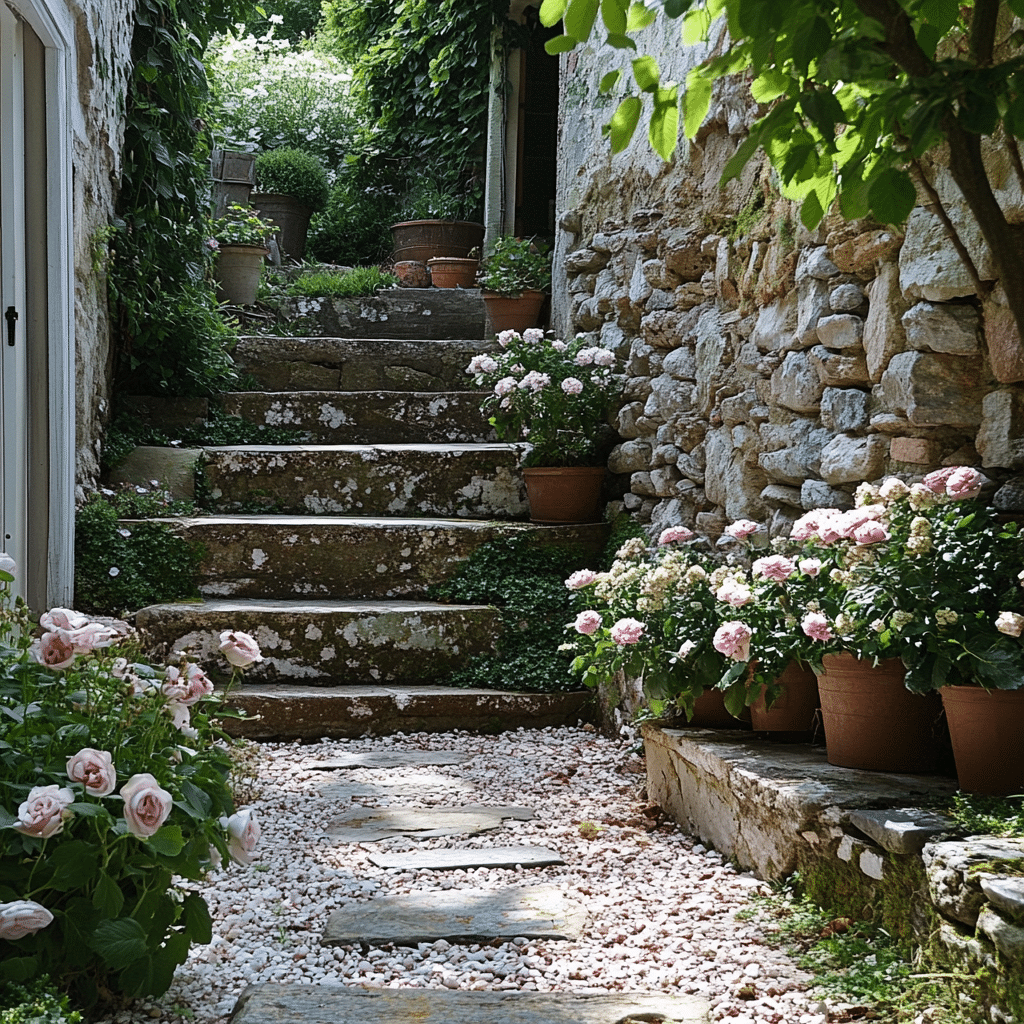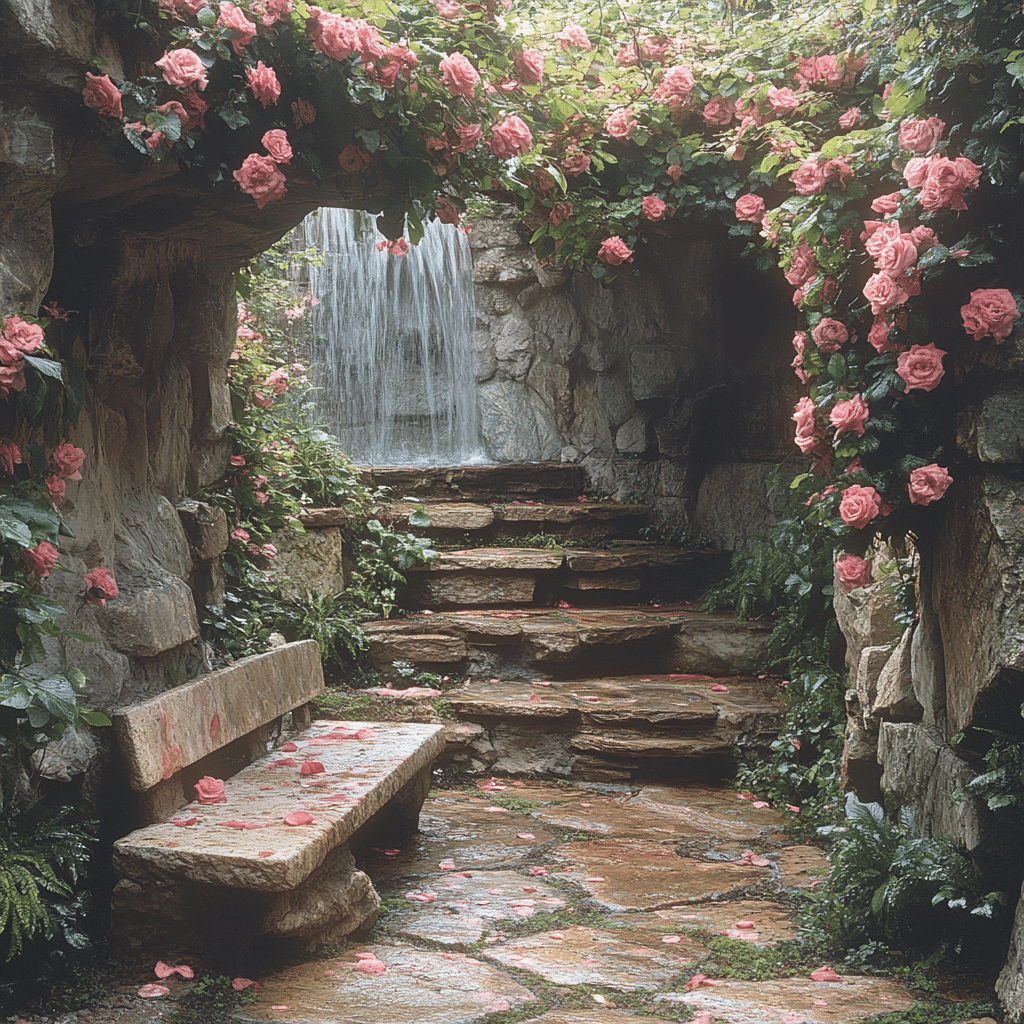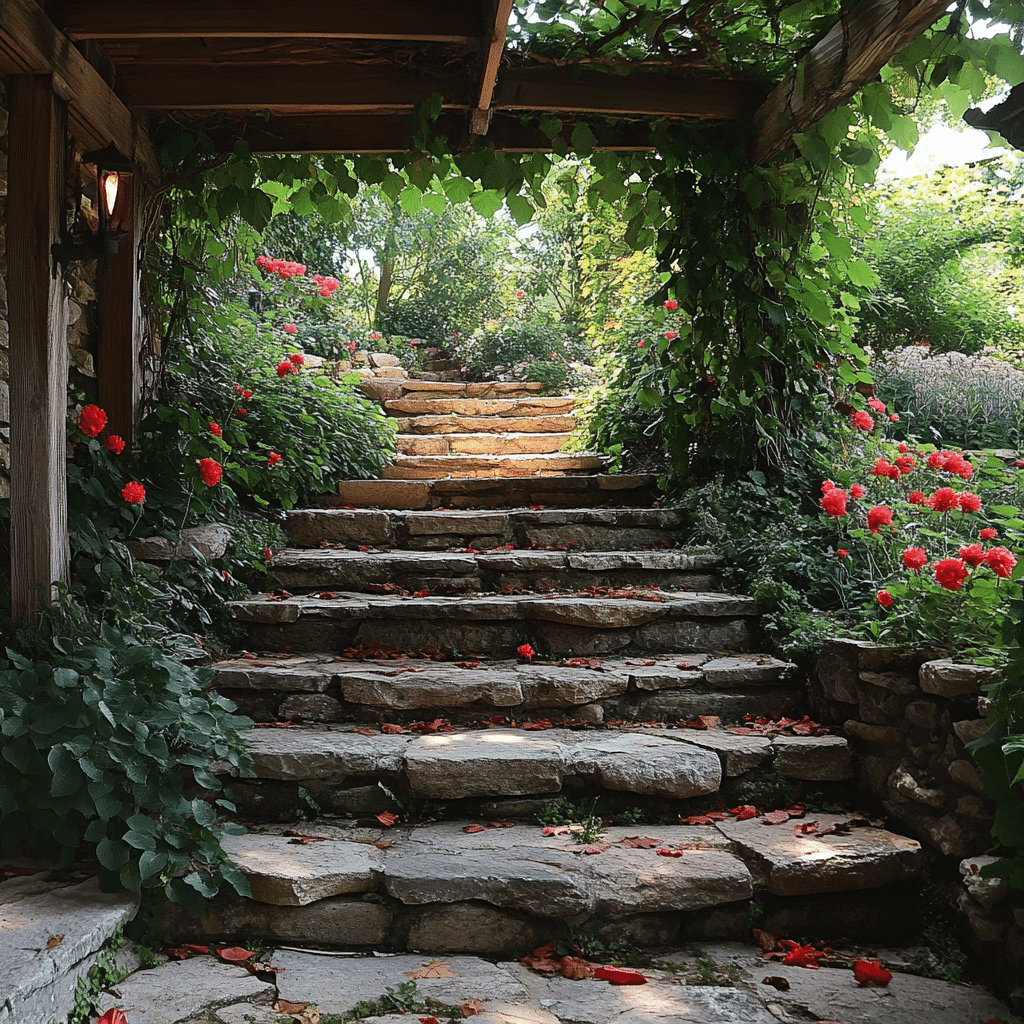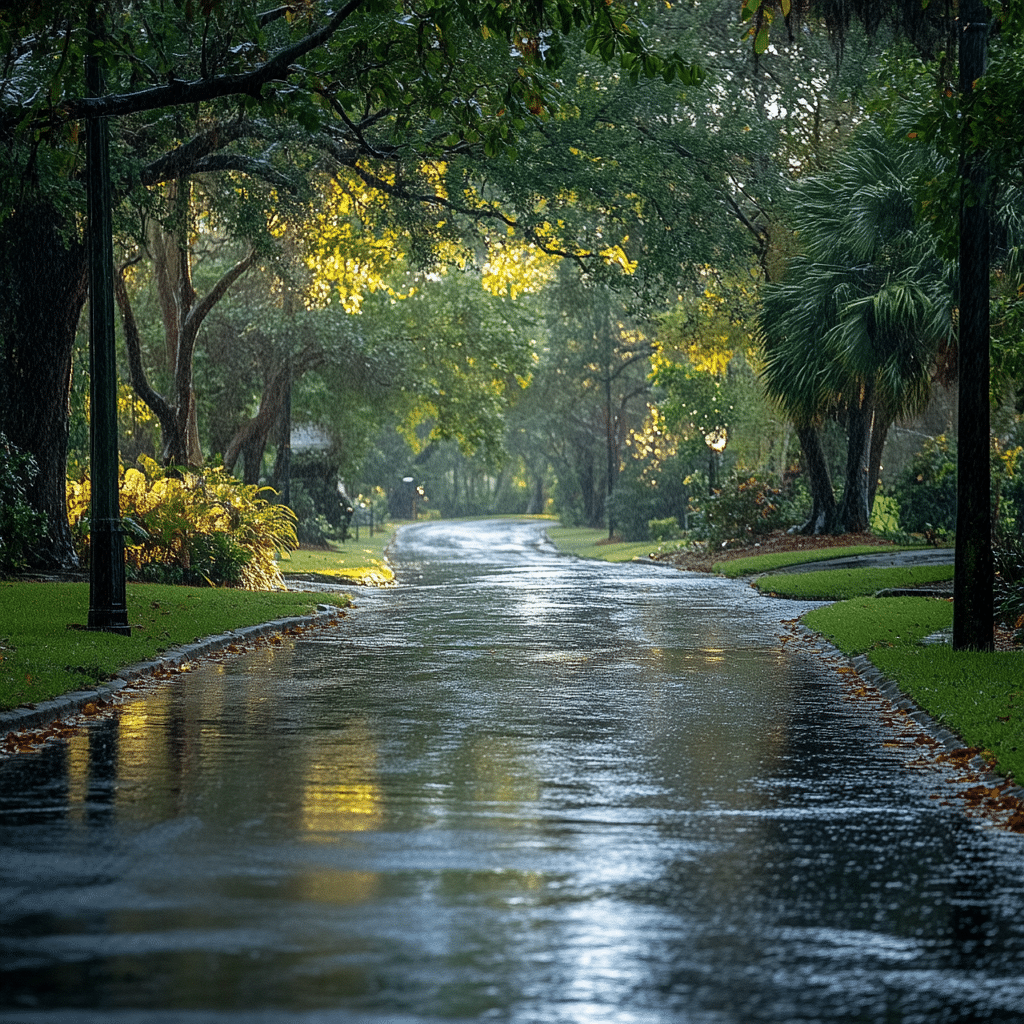A well-crafted garden can dramatically enhance your outdoor living experience, providing not only beauty but also a sense of peace. With the right garden ideas, you can transform limited spaces, lushly bloom your yard, or even create functional edible patches. Whether you’re a seasoned gardener or a newbie just dipping your toes into horticulture, these creative and practical garden ideas are sure to spark your imagination. Let’s dig in and explore ways to cultivate spaces that flourish beautifully.
1. Explore 7 Garden Ideas to Transform Your Outdoor Space
1. Vertical Gardens for Urban Spaces
Urban living often means limited gardening space, but vertical gardens are here to save the day! Just take a look at the “GroVert” Wall Planter System, which allows city dwellers to grow lush greenery even on narrow balconies. Vertical gardens not only enhance your walls’ aesthetics but also help purify the air you breathe. This space-saving idea is a green thumb’s dream come true.
2. Native Plant Gardens for Eco-friendly Living
Incorporating native plants into your garden can significantly benefit both the environment and your maintenance routine. For example, in Texas, homeowners are encouraged to plant bluebonnets and black-eyed Susans. These beauties not only thrive with minimal watering but also attract native pollinators, boosting local biodiversity. So, why not plant flowers that not only look great but are tailored to thrive naturally in your region?
3. Edible Gardens with a Twist
Want to infuse your garden with utility alongside beauty? Check out the “Garden Tower Project,” which features vertical planters that spin to allow easy access to a variety of fruits and vegetables. Perfect for tight spaces, this creative approach encourages sustainable living while supplementing your meals with fresh produce right from your balcony.
4. Zen Gardens for Tranquility and Meditation
Feel like creating a peaceful haven? A Zen garden could be just what you need! Inspired by serene spaces like the Portland Japanese Garden, these gardens use sand, rocks, and a few carefully chosen plants to promote relaxation and mindfulness. Whether you want a corner for reflection or a place to sit and unwind, this style of garden fosters an atmosphere perfect for meditation.
5. Color-Coordinated Flower Beds
Let’s talk about eye-catching visuals. The prestigious Chelsea Flower Show features stunning color-coordinated flowerbeds that are nothing short of a feast for the eyes. By grouping plants like petunias and marigolds in shades that gradate subtly, you create an enchanting spectacle that draws the eye and livens up any outdoor space. Your visitors won’t know what hit them!
6. Geometric Landscapes for Modern Aesthetics
Add a slice of modernity to your garden with geometric designs! The Gardens of the Future exhibit in London plays with various shapes and angles in plant selection that invite intrigue. Consider using boxwood hedges or gravel pathways to create an organized, contemporary feel. This approach not only adds structure but also amplifies the beauty of your outdoor space.
7. Pollinator-Friendly Gardens
Want to do your part for the environment? Creating a pollinator-friendly garden is a wonderful way to make a positive impact. The Xerces Society has successfully pioneered community gardens filled with native flowering plants like coneflowers and milkweed. By welcoming bees and butterflies into your garden, you’re nurturing essential biodiversity, all while generating a lively and colorful outdoor spectacle.

2. Boost Your Garden’s Functionality with These Ideas
Integrating garden ideas that merge beauty and functionality can amplify your gardening experience. Consider the following innovative concepts designed for multi-purpose utility:
Add Practical Landscaping Features
A well-planned garden layout goes a long way! Plant taller vegetables like tomatoes toward the back of the bed while keeping the smaller plants like lettuce in front. By staggering plant heights, you allow the sun to reach all your beloved crops efficiently.
Height, Texture, and Color
For a dynamic landscape, consider mixing various heights, colors, and textures. Use combinations of flowers, shrubs, and trees, supplemented by inviting pathways and cozy seating areas to encourage relaxation. Regular upping on maintenance, such as watering and weeding, guarantees that your garden stays as healthy as can be.
3. Seasonal Garden Ideas for Year-Round Beauty
Keep your garden looking vibrant with these seasonal strategies! A year-round garden requires thoughtfulness in planning and execution, but the rewards are immense.
1. Spring Blooms
Planting tulips and daffodils in autumn sets the scene for a color explosion just as the frost begins to fade. These early bloomers herald the arrival of spring and invigorate the outdoor space, preparing the ground for the warmer months ahead.
2. Summer Shade
As the temperatures soar, it’s essential to have shade in your garden. Introducing shade trees like maple or oak offers a cool refuge for gatherings. Their sprawling canopies provide comfort and beauty as you kick back and enjoy fresh lemonade underneath their protective branches.
3. Autumn Harvest
To keep your garden picturesque as the leaves begin to fall, opt for late-blooming perennials, such as asters and sedums. These hardy plants ensure your garden retains its colors and life well into the cooler months, giving you something to admire during the harvest season.
4. Winter Splendor
Lastly, don’t overlook winter! Full of character, evergreens like ‘Blue Spruce’ or ‘Winterberry Holly’ can add structure and visual interest to your landscape, ensuring your outdoor space doesn’t fall flat when the temperatures drop.

4. Innovative Garden Structures and Features
Adding unique structures can leave a lasting impression on your outdoor vibes. Here are some concepts worth considering:
1. Garden Arbors and Trellises
Think about investing in customizable structures from companies like “Garden Trellises.” Not only do arbors and trellises provide plant support, but they can also beautifully define pathways, adding much-needed vertical interest to your landscape.
2. Sustainable Water Features
Imagine a peaceful atmosphere with a solar-powered fountain from “Bliss Gardens”. Such features not only enhance ambiance but also promote eco-friendly practices, letting you enjoy tranquil water sounds guilt-free.
3. Fire Pits and Gathering Spaces
Want your garden to transition smoothly from day to night? A permanent fire pit makes for a cozy gathering spot with family and friends. It extends your outdoor enjoyment into the cooler months, providing warmth and a charming focal point for your evenings.
Wrap-Up: Cultivating Your Ideal Garden Oasis
Creating a stunning outdoor space calls for more than just pretty plants; it demands thoughtful design, smart innovations, and a respect for natural environments. By blending these practical and inspiring garden ideas into your outdoor sanctuary, you’ll not only beautify your surroundings but also encourage sustainable practices. Embrace your creative side, play with bold designs, and watch your garden flourish into a breathtaking oasis where nature and aesthetics intermingle in perfect harmony. Engage with your outdoor space like never before!
Remember, whether you’re checking the current mortgage rate to finance a garden retreat or considering which shade of Trader Joe ‘s protein powder to enjoy after a tiring day of gardening, every element you introduce can enrich your gardening experience. Don’t forget to enjoy the bountiful rewards; after all, gardening is about cultivating beauty and growth in more ways than one!
Garden Ideas for Stunning Spaces That Flourish Beautifully
Getting Creative with Garden Ideas
When you’re brainstorming garden ideas, consider this: did you know that many famous gardens have inspired entire movements? Take the renowned gardens of Real Madrid milan for instance, which reflect a blend of cultural influences and showcase intricate plant arrangements that draw visitors from far and wide. These designs often emphasize harmony and serenity, making them ideal models for your own peaceful retreat in your backyard.
But that’s not all! In another twist, incorporating sensory plants can transform your garden into a tranquil haven. Aromatic herbs like lavender and mint can not only bring delightful scents but also serve practical purposes in cooking. Speaking of sensory experiences, the wide world of gardening can feel like an assault on titan. It’s filled with challenges, yet each triumph—be it a thriving tomato plant or a blossoming flower—feels like winning a hard-fought battle against the odds.
Fun Facts to Enhance Your Garden Ideas
Here’s a fun fact: did you know that gardens can actually boost your mood? Studies show that spending time outdoors and tending to your plants can be incredibly therapeutic. It’s like playing at the Winstar World Casino And Resort, where the thrill of the gamble can mirror the excitement of watching your seedlings sprout into lush greenery. Plus, incorporating a cozy seating area in your garden could elevate your experience, making it a perfect spot for relaxation or social gatherings.
For those who love quirky trivia, here’s something that might surprise you: bees can recognize human faces! This little nugget can inspire fun accents in your garden—think bee-friendly flowers that entice these important pollinators. If you’d like to dig into specifics, our Instagram Help Center has plenty of tips on showcasing your blooming backyard online, allowing you to share your garden journey with friends and followers. So, whether it’s implementing efficient layouts or cultivating pollinator gardens, let these garden ideas lead you to a flourishing outdoor space.

How do you layout a garden for beginners?
Start by placing tall veggies at the back of the garden bed, mid-sized ones in the middle, and smaller plants at the front or as a border. This arrangement ensures that every plant can get enough sunlight and space to grow. Don’t forget to add some pollinator plants to draw in beneficial insects!
What is the best low maintenance garden?
The best low-maintenance garden typically features native plants, perennials, and ground covers that require little watering and care. Using mulch can help suppress weeds and retain moisture, making it easier to enjoy your garden without too much fuss.
What is the first rule of landscaping?
The first rule of landscaping is to organize plants from big to small. Start with larger trees, then move on to shrubs, perennials, and finally ground cover. This method helps create a visually pleasing structure while keeping practical needs in mind.
How can I make my garden look amazing?
To make your garden look amazing, play around with a variety of heights, colors, and textures. Adding pathways, decorative elements, and seating areas can create interest, plus regular maintenance like pruning and watering keeps everything healthy and vibrant.
What is the most common garden layout?
The most common garden layout is often a mix of rows or blocks, allowing for efficient use of space and easy access for planting and harvesting. Square foot gardening is another popular choice, especially for smaller spaces.
What veggies grow best together?
Companion planting helps certain veggies thrive together, like tomatoes with basil or carrots with onions. These combinations can improve growth and ward off pests to give you a better harvest.
What is the easiest thing to plant in a garden?
For beginners, easy plants to grow include radishes, lettuce, and herbs like parsley or chives. These plants typically sprout quickly and require minimal attention, making them perfect for new gardeners.
Is there an app to help me design my garden?
There are several apps out there to help design your garden, like Garden Planner or Plan-a-Garden. These apps can provide templates or allow you to create your layout and visualize your space.
What is the most efficient garden layout?
An efficient garden layout is one that maximizes space while minimizing maintenance, often featuring raised beds or containers. This setup improves drainage and makes it easier to care for plants.
What is the rule of 3 in landscaping?
The rule of three in landscaping suggests using groups of three or odd numbers for plants and flowers for a more natural and balanced look. This approach helps create visual interest and flow in your garden.
What are the 7 steps to landscape design?
The seven steps to landscape design include defining your goals, assessing the site, budgeting, creating a master plan, choosing plants and materials, implementing the design, and maintaining your landscape over time.
What is the golden ratio in a garden?
The golden ratio in a garden suggests a proportion of 1:1.618, which is visually pleasing. Using this ratio when placing plants, paths, or features can create a more harmonious and balanced look.
What is the best low-maintenance garden for the elderly?
For the elderly looking for low-maintenance gardens, consider raised beds with low-growing plants and paths made of soft surfaces. Incorporating native plants also reduces the need for constant care and watering.
How do you make a simple beautiful garden?
A simple and beautiful garden can be made by selecting a few key plants, creating defined pathways, and using elements like stones or wooden borders to add structure without overwhelming the space.
What to do with an area where grass won’t grow?
If grass won’t grow in an area, consider adding mulch or using ground covers like creeping thyme. You could also turn it into a flower bed or a rock garden, creating a unique feature in your yard.
What is the best low maintenance garden path?
The best low-maintenance garden path is often made of materials like gravel or mulch, which are easy to lay down and require little upkeep. Pavers or bricks with grass in between can also create a lovely look without too much fuss.
What plant needs the least amount of care?
Plants that need the least care typically include succulents, lavender, and many native species. These plants can survive with minimal watering and are often pest-resistant.
What is the easiest landscaping to maintain?
Easy landscaping to maintain often involves shrubs, perennials, and ground covers that don’t require frequent pruning or special care. Choosing drought-resistant varieties can also lessen your workload.
What is the easiest plant to take care of outdoors?
The easiest plants to take care of outdoors are generally hardy varieties like marigolds, succulents, and hostas. They tend to thrive with minimal water and can withstand various weather conditions.
What is the basic pattern in garden design?
The basic pattern in garden design often includes a combination of symmetry and asymmetry, pathways, focal points, and layering with plants of different heights. This blend creates a visually appealing and functional space.
What is the most efficient garden layout?
An efficient garden layout enhances accessibility and plant health, typically organized with easy paths between rows for maintenance and harvesting. Raised beds can also improve efficiency by reducing the need to bend down.
How should a garden be arranged?
Your garden should be arranged considering size and light requirements, with taller plants at the back and shorter ones in the front. Adding variety in shapes and textures creates a pleasing visual impact too.
Is there an app to help me design my garden?
There are several apps to help design your garden, like Smart Plant and iScape, which allow you to easily visualize your plans and choose the best plants for your space.





















